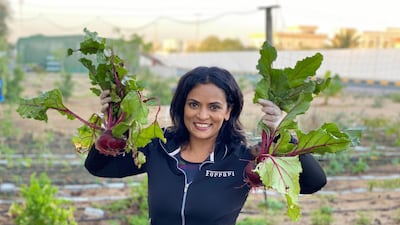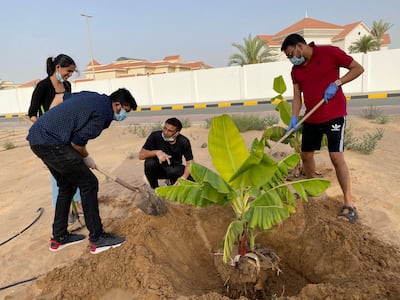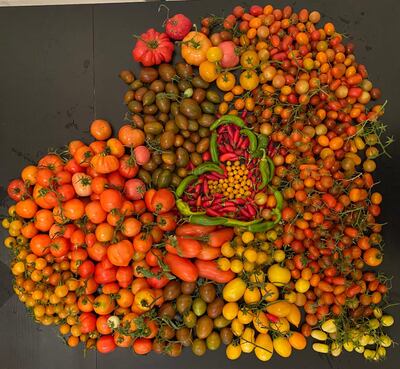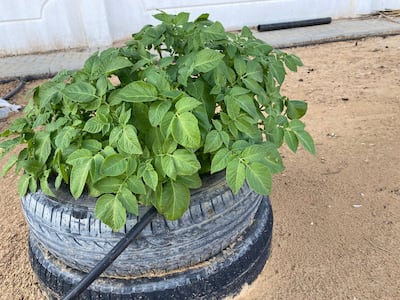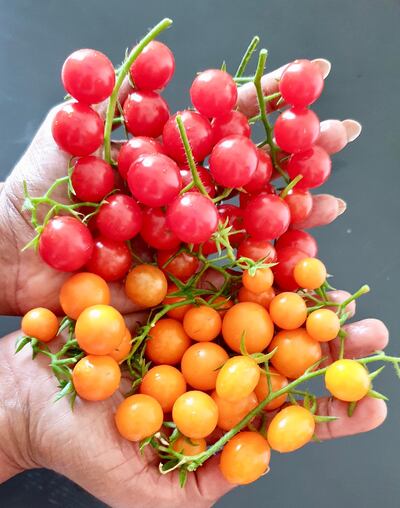Is it possible to grow your own food while living and working in the UAE? Sharjah resident, professor and dedicated gardener Anu Ranade certainly believes that everyone can become less dependent on supermarkets for at least four or five months of the year.
Her garden generously fed her during the stay-at-home period of the Covid-19 pandemic, limiting her supermarket visits to the occasional trip to pick up onions and fresh fruit. Every year, Ranade grows more than 50 different types of fruit and vegetables
“Most of what we have been eating, except mushrooms, meat, dairy products and poultry, comes directly from our garden, and it gives you a sense of satisfaction to feast on fresh and nutritious food that you have grown yourself,” says Ranade, who works as an associate professor of anatomy at the University of Sharjah.
Growing up in the lush coastal city of Mangaluru in south-west India, Ranade became curious and passionate about gardening while helping her father grow vegetables and fruits in their back garden.
Since moving to the UAE 11 years ago, Ranade has realised that plants can adapt to the country’s hot and dry conditions, and so she has been able to grow organic produce and regionally adapted seeds.
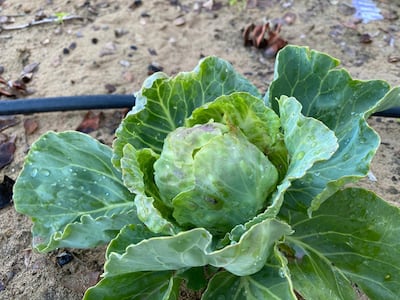
Over the years, she developed a garden on the balcony of her small apartment in Ajman and later, on the terrace of her current Sharjah building, using wooden planks, containers, trellises, vertical planters, car tyres, refrigerator racks, milk cans and railing planters.
The University of Sharjah supports her philosophy of providing sustainable solutions for the benefit of society, and provides her with a 225-square-metre greenhouse for community farming. The professor has also been entrusted with leading the university's Linking Education and Farming project.
At the site, she harvests about 40 varieties of tomatoes, cabbages, ginger, mustard, turmeric, garlic, beetroot, string beans, tomatillos, carrots, basil, cantaloupes, watermelons, spinach, mangoes, drumsticks, pomegranates, potatoes, peppers, amaranths, corn, wheat and more.
In the past season, she grew more than 80 kilograms of heirloom tomatoes, 32kg of beetroot, 10kg of baby potatoes and more than 5kg of okra.
Ranade believes it is a misconception that you need to have green fingers or ample space to grow plants, or that it takes a lot of time and effort to do so. "If an urbanite like me, with a regular job, could easily grow vegetables on both a balcony and a terrace, anyone can. One should start with a clear objective in mind about the plants or vegetables they are interested in growing, or what their family likes to eat.
“If you are limited by insufficient space, you may consider growing them in containers or vertical garden pots. September to April is the best season to grow plants in the UAE,” she says.
Beginners are advised to grow herbs such as spinach, basil and mint. “One should make sure to place the pot or container in a place where it gets adequate sunlight. An average-sized balcony can accommodate 10 to 12 medium-sized pots. However, it is good to decide on how many vegetables you would like to harvest.
“On average, you can harvest about 200 to 300 grams of string beans once every two days from a single plant, 1kg to 2kg of potatoes, 3kg to 4kg of sweet potatoes, 2kg to 3kg of beets, and 500g to 1kg of cauliflower or cabbage, if grown in average-sized pots. You may also choose a combination of crops – for example, beans that help fix nitrogen can be grown with spinach or lettuce.”
Extreme weather, including heat, sandstorms, heavy wind and occasional rains, along with pests, are some of the biggest challenges that UAE gardeners face. The blazing temperatures of the summer months, between May and September, and the unpredictable sandstorms that follow, can be a nightmare for gardeners because, in no time, plants are either ripped out or turned into a crusty mess.
Ranade has installed a drip irrigation system with timers attached so her plants get adequate water to sustain them throughout the season.
"Also, sprinklers operate twice a day before dawn and after dusk, helping to cool the surrounding area and keep the plants in good condition," she says. "Moreover, the compost used for the plants has significantly helped to retain water and keeps the roots aerated. The okra plants, basil, tomatillos and amaranths have grown extremely well, with full blooms through the summer."
Ranade fights pests by spraying plants with a garlic and hot pepper extract diluted in water. “I spray this solution once every two weeks on all the plants, but it is important to avoid using it on the blooms. Also, I hang a few pitcher plants to trap fruit flies.
“One of the most important aspects of preventing the growth of mealy bugs, especially on tomatoes and peppers, is to ensure that all the leaves and foliage close to the soil are pruned and cleaned, and that the water is not sprayed directly on to the leaves. One of the best forms of natural pest management I have witnessed is birds happily feasting on snails and caterpillars.”
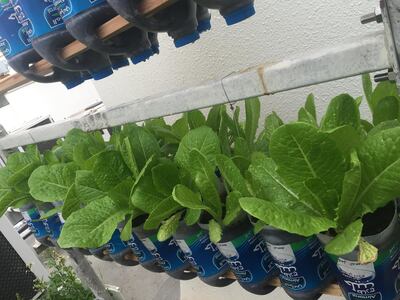
You do not have to spend money on expensive planters, either, Ranade says. Instead, use resources found in and around your house and community. "One can upcycle items such as milk cans, yoghurt bins, car tyres, bookshelves, wooden planks, barbecue stands and kettles, and use them as planters to happily grow their produce," she says.
Anu's tips for growing tomatoes
The best time to grow tomatoes is between September and April. “It is extremely easy to grow tomatoes. There are two varieties of plants; a bush that can be planted in pots and the tall variety that needs a stake or a wall to support it. Seeds may be brought from any local store, or you can use the fruit seeds brought from the supermarket.
“Plant the seeds indoors in a seed tray – you can upcycle egg racks or used paper cups – in moderately fertile soil. They can be transferred to a medium-sized pot/container when you notice a sapling with two or three leaves. Transfer the plants in the evening or after sunset so that the sapling has time to recover. No more than two plants should be planted in a pot/container, and make sure you plant them four inches apart.
You will need high-yield soil, or compost, mixed with potting soil to attain a good yield. Water them well, especially when they bloom and when the fruits start to show up. You can keep the pots on a large tray and drip-irrigate the tray instead of the plants, to avoid the mealy bugs. Heavy watering after fruiting might result in split fruit. Pick the fruit when it begins to ripen as leaving them on the plant can hinder the growth of new blossoms.”
